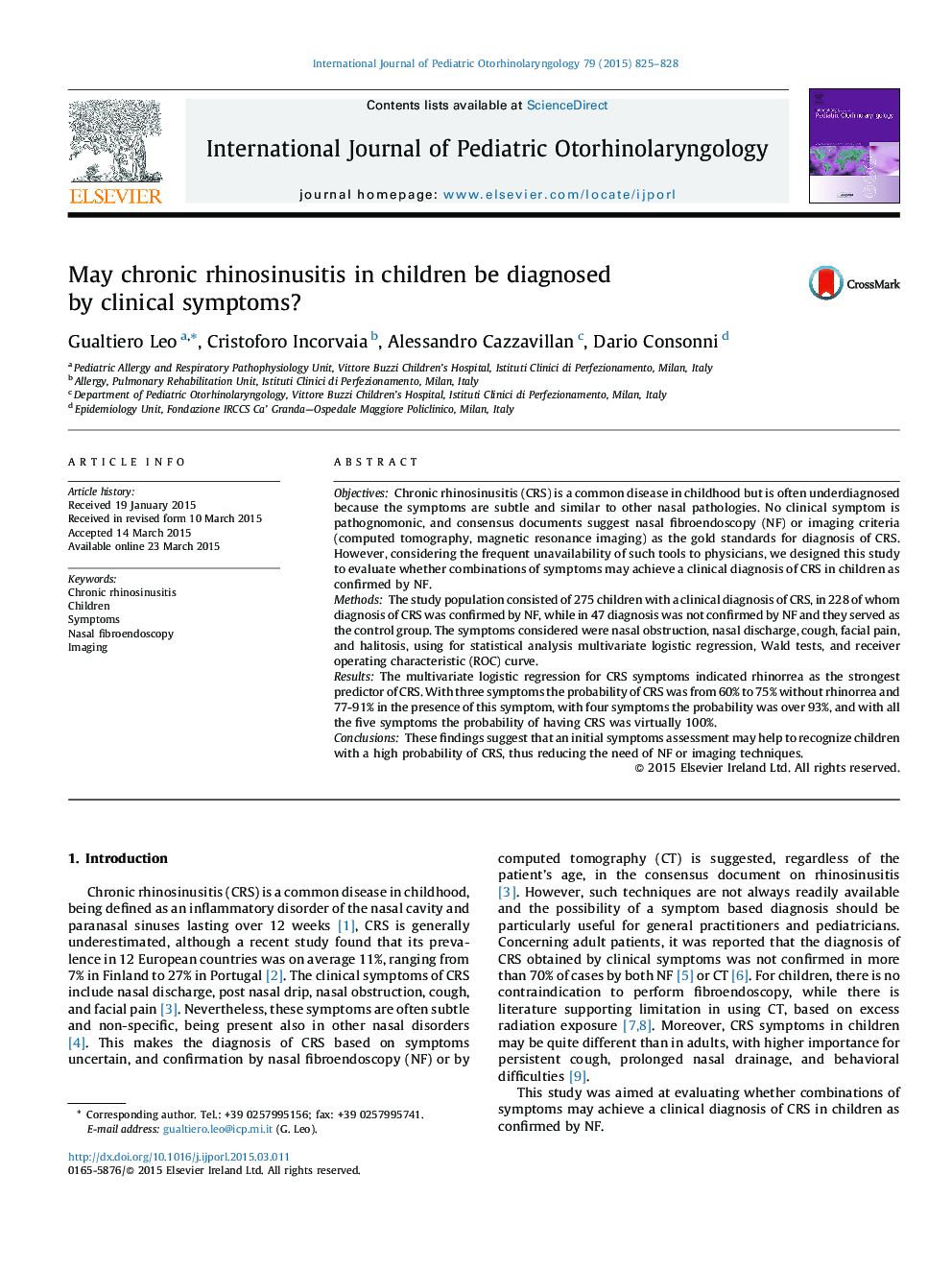| Article ID | Journal | Published Year | Pages | File Type |
|---|---|---|---|---|
| 4112356 | International Journal of Pediatric Otorhinolaryngology | 2015 | 4 Pages |
ObjectivesChronic rhinosinusitis (CRS) is a common disease in childhood but is often underdiagnosed because the symptoms are subtle and similar to other nasal pathologies. No clinical symptom is pathognomonic, and consensus documents suggest nasal fibroendoscopy (NF) or imaging criteria (computed tomography, magnetic resonance imaging) as the gold standards for diagnosis of CRS. However, considering the frequent unavailability of such tools to physicians, we designed this study to evaluate whether combinations of symptoms may achieve a clinical diagnosis of CRS in children as confirmed by NF.MethodsThe study population consisted of 275 children with a clinical diagnosis of CRS, in 228 of whom diagnosis of CRS was confirmed by NF, while in 47 diagnosis was not confirmed by NF and they served as the control group. The symptoms considered were nasal obstruction, nasal discharge, cough, facial pain, and halitosis, using for statistical analysis multivariate logistic regression, Wald tests, and receiver operating characteristic (ROC) curve.ResultsThe multivariate logistic regression for CRS symptoms indicated rhinorrea as the strongest predictor of CRS. With three symptoms the probability of CRS was from 60% to 75% without rhinorrea and 77-91% in the presence of this symptom, with four symptoms the probability was over 93%, and with all the five symptoms the probability of having CRS was virtually 100%.ConclusionsThese findings suggest that an initial symptoms assessment may help to recognize children with a high probability of CRS, thus reducing the need of NF or imaging techniques.
